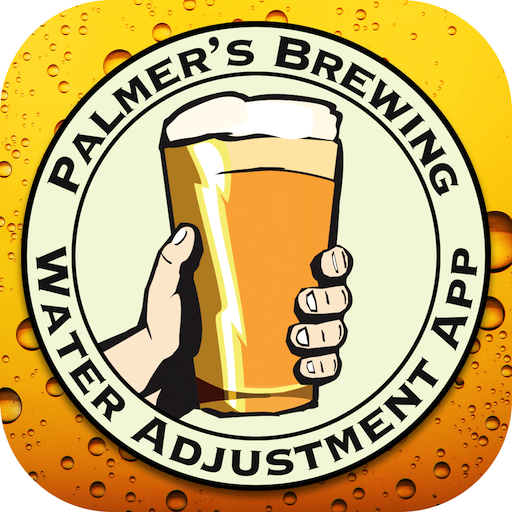
このページには広告が含まれます

Palmer's Brewing Water Adj App
フード&ドリンク | Palmer Brewing Solutions, Inc.
BlueStacksを使ってPCでプレイ - 5憶以上のユーザーが愛用している高機能Androidゲーミングプラットフォーム
Play Palmer's Brewing Water Adj App on PC
The purpose of this application is to help the brewer calculate salt and acid additions to create different brewing waters suitable for particular beer styles. The mineral salts in the water are the seasoning for the beer, and their chemistry sets the stage for the pH of the mash, wort, and beer.
The water chemistry affects the beer flavor in two main ways: seasoning and pH. The water mineral profile affects the flavor balance of the beer (hoppy, balanced, or malty) and also the pH of the beer, and the pH affects how the beer's flavors are expressed to the palate. Lower pH makes the beer flavors brighter, and more attenuated. Higher pH makes the beer flavors softer and rounder.
Suggested mineral profiles are provided for most of the common beer styles. The profiles consist of ranges for calcium, magnesium, total alkalinity as calcium carbonate, sulfate, chloride, sodium, and residual alkalinity. The suggested profiles should combine with the typical grain bill for the style to create a mash pH within the desired range (5.2-5.8 @ 20°C) for good proteolysis and starch conversion. Adjusting the mash pH within that range is a brewer's best tool for controlling the wort pH, and eventual beer pH, for the best beer flavor for that recipe. It all starts with the minerals and residual alkalinity of the water.
Source water profiles can be saved for future use.
Acid additions to reduce alkalinity and pH are also calculated.
Steps 1-7 assume the entire volume of mash and sparge water is being treated together. Step 8 is for separate sparge water acidification if that water is being treated separately, without salt additions.
The water chemistry affects the beer flavor in two main ways: seasoning and pH. The water mineral profile affects the flavor balance of the beer (hoppy, balanced, or malty) and also the pH of the beer, and the pH affects how the beer's flavors are expressed to the palate. Lower pH makes the beer flavors brighter, and more attenuated. Higher pH makes the beer flavors softer and rounder.
Suggested mineral profiles are provided for most of the common beer styles. The profiles consist of ranges for calcium, magnesium, total alkalinity as calcium carbonate, sulfate, chloride, sodium, and residual alkalinity. The suggested profiles should combine with the typical grain bill for the style to create a mash pH within the desired range (5.2-5.8 @ 20°C) for good proteolysis and starch conversion. Adjusting the mash pH within that range is a brewer's best tool for controlling the wort pH, and eventual beer pH, for the best beer flavor for that recipe. It all starts with the minerals and residual alkalinity of the water.
Source water profiles can be saved for future use.
Acid additions to reduce alkalinity and pH are also calculated.
Steps 1-7 assume the entire volume of mash and sparge water is being treated together. Step 8 is for separate sparge water acidification if that water is being treated separately, without salt additions.
Palmer's Brewing Water Adj AppをPCでプレイ
-
BlueStacksをダウンロードしてPCにインストールします。
-
GoogleにサインインしてGoogle Play ストアにアクセスします。(こちらの操作は後で行っても問題ありません)
-
右上の検索バーにPalmer's Brewing Water Adj Appを入力して検索します。
-
クリックして検索結果からPalmer's Brewing Water Adj Appをインストールします。
-
Googleサインインを完了してPalmer's Brewing Water Adj Appをインストールします。※手順2を飛ばしていた場合
-
ホーム画面にてPalmer's Brewing Water Adj Appのアイコンをクリックしてアプリを起動します。



